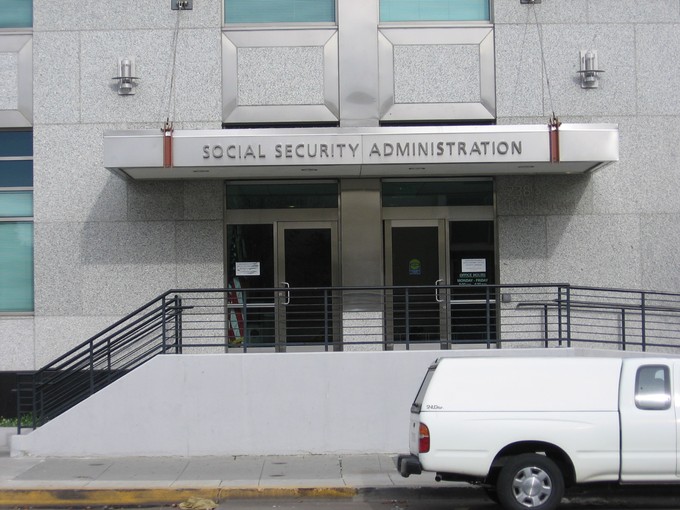House Rule Would Cut Social Security Disability Benefits
By
Jasmine Tucker
Posted:
|
Social Insurance, Earned Benefits, & Safety Net

Social Security office in Oakland, CA/Photo courtesy of Bruce Bortin
Last week, we talked about the various things the new Congress has been up to since they were sworn in on January 6. One of those things was a serious rule change to the Social Security program. The proposed rule would prevent lawmakers from transferring funding from the Social Security retirement and survivor’s (OASI) trust fund to the disability (DI) trust fund.
The 2014 Social Security Trustees Report breaks down the retirement and survivor’s trust fund and the separate disability trust fund. Taken together, these two programs are fully funded until the year 2033, meaning that revenue from payroll taxes and other sources will be able to cover 100 percent of benefits until 2033 and 72 percent of benefits after 2033.
Because the programs are technically separate, the report also breaks down each trust fund individually: The retirement and survivors’ trust fund by itself can pay 100 percent of retirement and survivor’s benefits until 2034, and then can cover 77 percent of benefits afterwards. The disability insurance trust fund, though, is only able to pay 100 percent of disability benefits until 2016, and then can cover 81 percent of disability benefits thereafter.
In order to prevent cuts in disability benefits next year, Congress would need to temporarily reallocate some payroll tax revenue from the retirement program to disability benefits, a historically non-controversial measure that Congress has taken 11 times in the past. Doing so also ensures that workers who paid into Social Security and earned disability benefits can receive those benefits should they need them. The House proposed rule, however, would prevent lawmakers from taking this action and would result in a 19 percent cut to disability beneficiaries starting in late 2016 – or could potentially force a debate about even more wide-reaching changes to Social Security.
To see how much residents in your state receive from Social Security disability benefits, explore our local spending dataset.